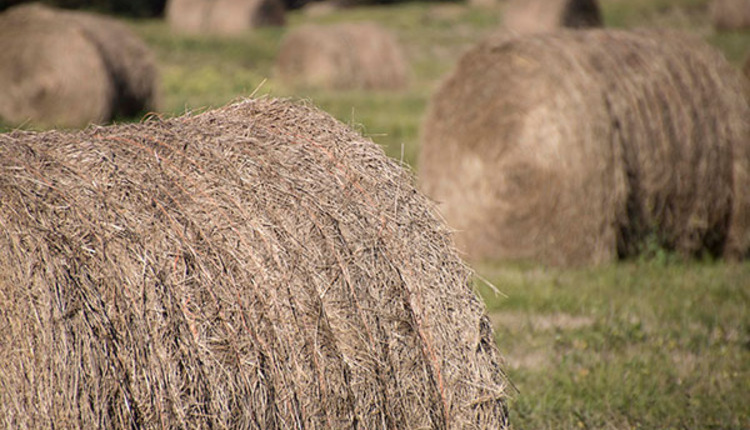
When calculating winter-feed needs for cattle, correctly estimating hay or standing forage intake is essential.
Forage quality determines the amount of forage consumed. Cows consuming higher quality forages are more likely to meet their nutrient needs due to greater concentrations of nutrients in the forages. Also, a larger quantity of higher quality forages can be consumed.
“Higher quality forages are fermented more rapidly in the rumen, leaving a void that the animal can refill with additional forage,” says Glenn Selk, emeritus extension animal scientist for Oklahoma State University. “Consequently, forage intake improves. The combination of greater nutrient content and forage intake makes high-quality forage very valuable to the animal and producer,” he states in OSU’s Cow/Calf Corner newsletter.
Low-quality forages, below about 6 percent crude protein, may be consumed at about 1.5 percent of body weight per day on a dry matter basis. Higher quality grass hay, above 8 percent crude protein, can be consumed at about 2 percent of body weight. Excellent forages, including high-quality alfalfa, silages, or green pasture, may be consumed at 2.5 percent of body weight.
Producers can calculate the approximate amounts of hay needed with these intake estimates.
For example, assume grass hay fed to 1,200-pound pregnant, spring-calving cows is considered high quality and tested 8 percent crude protein. The cows will voluntarily consume 2 percent of their body weight, which in this case is 24 pounds per day based on 100 percent dry matter.
Grass hays are often 7 to 10 percent moisture, so assuming the hay is 92 percent dry matter the cows will consume about 26 pounds per day on an “as-fed basis.”
However, when feeding big round bales, hay wastage needs to be considered. Generally, hay wastage is estimated between 6 to 20 percent. Assuming 15 percent hay wastage for this example, approximately 30 pounds of grass hay are needed for every cow, each day that hay is expected to be the primary ingredient in the diet.
After calving and during early lactation, cows may weigh 100 pounds less but be able to consume about 2.6 percent of their body weight in hay. This equals 36 pounds of “as-fed” hay per cow per day.
“Accurate knowledge of average cow size in your herd, as well as the average weight of your big round bales, becomes necessary to predict hay needs and hay feeding strategies,” says Selk.
Due to the fact that big round hay bales vary in weight, weighing a pickup or trailer with and without a bale is one way to estimate bale weights. However, forage specialists at the University of Georgia have published information to aid in estimating hay bale weights.

Sydney Sleep was the 2016 Hay & Forage Grower summer editorial intern and is a junior at South Dakota University.

